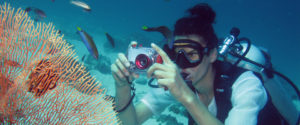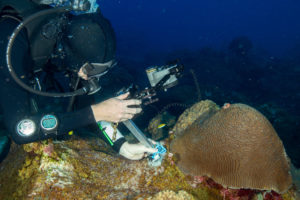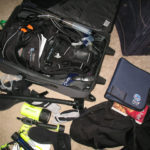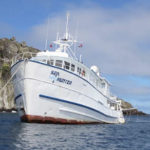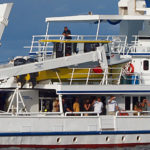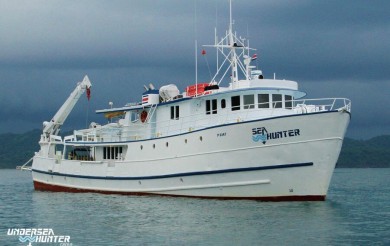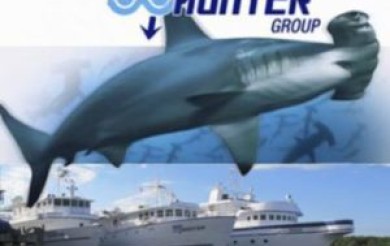Underwater Photography: Tips on how to take great pictures in Cocos Island
As the saying goes: “a picture can paint a thousand words”, then your photographs should be as stunning as possible, especially when taking pictures in the amazing underwater paradise of Cocos island. We all know that taking pictures underwater is not as simple as compared when taking pictures on land. You have to consider what kind of camera equipment and accessories to use in shooting a particular subject. This is on top of the knowledge that you have to be prepared and consider the environmental factors existing in Cocos island, like strong water current and sometimes poor visibility.
With this, allow us to breakdown the different underwater photography methods and follow simple steps in getting a great picture.
Macro-Photography
Possible Subjects: Nudibranch, shells, minute shrimps and other small critters
We will start with this often neglected type of underwater photography in Cocos island. While this offshore Costa Rican island is not really a haven for macro-photography, you can still do this kind of photography where minute subjects awaits your lens like nudibranch, shells and other small critters.
Camera and Shooting Considerations
All cameras, even the compact digital cameras, that has a Macro mode can be use in this kind of photography. If its your first time to own and operate a compact digital camera with an underwater housing, please do not take macro-photographs in Cocos island. You will be just taking blurred pictures. It takes time and practice in a confined environment in order for you to master the focusing of the lens to a relatively small subject. Take note that taking macro-photographs using compact digital camera doesn’t just require the clicking of the shutter button. Pressing and holding it while aiming at your subject will automatically adjust the lens to the best focus.
For professional photographers, aside from using sophisticated underwater camera, certain camera functions are to be set depending on the underwater condition. For example, the aperture size of your lens will depend on how much light you want to get in. The higher the aperture size, the more light will come in. Aperture size will also affect the depth of field which is very important in a macro-photograph. Depending on how you want your photograph to come out, you can either choose the background to be blurred or in focus. The general rule is when you minimize the aperture, the depth of focus will increase resulting to clear background.
But the real challenge when taking macro-photographs in Cocos island is not the quality of your camera. But instead, it is more of how to deal with the physical factors like water current and visibility.
Remember, that you need to be steady and still while aiming for that small subject. With strong current, stability and staying in the same spot would be difficult. However, with the aid of simple tools, like a reef hook, you can achieve stability and be able to position yourself just in front of your subject without being drifted away. One great way to achieve this is to secure the reef hook in a sturdy rock and position yourself facing against the current. This in turn positions yourself with the camera right on top or near the subject.
If light source is minimal or when poor visibility comes in to a prevalent condition, then having an artificial source of light may come in handy. This means that you will need an external strobe for this condition.
Wide-Angle Photography
Possible Subjects: Any species of sharks, whales, dolphins, jacks and other large pelagic fish
This is the type of photography that everybody has been doing in Cocos island for years. The reason behind this is you don’t need to look for a subject. It’s right there the moment you plunge in the water. Sharks, of all sorts in terms of type and size, big whales and dolphins, manta rays, sea turtles and other large pelagic creatures will make you photography skills put on work underwater. However, this does not mean that you do not need to apply certain techniques and just continue clicking on the shutter button.
Camera and Shooting Considerations
If you are using a compact digital camera, you can still do wide-angle photography. But don’t expect to have stunning results. You can opt for external lens and strobes which can significantly add focus, vibrancy and depth to your photographs.
As far as the lens is concerned, fisheye lens are the best since it provides your camera a wide and panoramic view of the surrounding. This means that it captures the totality of the surrounding being shot. Speaking of external strobes, we suggest that you first practice using ambient light. Meaning, that you can use natural lighting created from the rays of the sun to illuminate your subject. Eventually, when you master this technique, you can now add additional light source using strobes and combine both ambient and artificial light to create stunning photographs.
Same with macro-photography, the real challenge here is how to deal with the physical conditions prevalent in Cocos island. For instance, you should take note of the visibility that may suddenly subside in Cocos island. Water turbidity can cause back-scatter to your photographs especially if you are using external strobes. The good news is that you can invest on another physical factor which can easily take you to another area of the reef.
We are talking about strong water current. Some have experienced turbid waters during the initial stage of the dive. With this, take time to drift going to the ledges of the reef where visibility is mostly clear. There, you can position yourself aiming at passing by sharks, whales and dolphins. Reaching low on air at 500 psi (50 bars) doesn’t mean that you need to rest your fingers on pressing the shutter button. Some of the great photographs in Cocos island were taken towards the end of the dive interacting with a signature subject: the massive school of jacks.
The strong water current also means that you need to securely fasten your camera equipment using carabiners or quick release buckles attached either to your hand or to your buoyancy control device. This guarantees you that you won’t accidentally loss your camera equipment.
Reference
Underwater Photography Guide: www.uwphotographyguide.com
Dive Photo Guide: www.divephotoguide.com
Underwater Photography: www.underwaterphotography.com
Video courtesy from ProPhotosNow
You also might like these:
Cocos Island Liveaboard Trips for 2019
Due to high demand of liveaboard trips to Cocos island, as early as this year, we are publishing the 2019 trips for you to choose your preferred schedule and prepare for the ultimate diving adventure of your life. Reserve your seat to Cocos Island as they are selling like hotcakes. Schedule of Liveaboard Trip to […]



